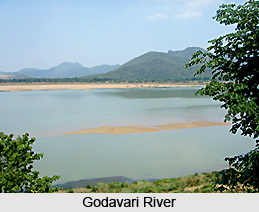 Aurangabad district is located in the state of Maharashtra, mainly in the River basin of Godavari River. A part of it lies along the north west of the Tapi river basin. The district has a general incline towards the south and east and the north-western part of it falls under the Godavari-Purna basin. The district lies between 19 and 20 degrees north latitude and 74 to 76 degrees east longitude. There are a total of three mountains in the district. These are: Antur, Satonda and Abbasgad. The average height of the southern portion of the district is 600 to 670 metres.
Aurangabad district is located in the state of Maharashtra, mainly in the River basin of Godavari River. A part of it lies along the north west of the Tapi river basin. The district has a general incline towards the south and east and the north-western part of it falls under the Godavari-Purna basin. The district lies between 19 and 20 degrees north latitude and 74 to 76 degrees east longitude. There are a total of three mountains in the district. These are: Antur, Satonda and Abbasgad. The average height of the southern portion of the district is 600 to 670 metres.
The main rivers flowing through the Aurangabad district are the Godavari River and the Tapi River. Other rivers include the Purna River, Shivna River, Kham River, Dudhna River, Galhati and Girja rivers all of which are the tributaries of the Godavari. The maximum temperature experienced by the district is around 45.9 degree Celsius, and the minimum temperature is around 5.6 degree Celsius. In Aurangabad, the rainy season starts from the month of June to September. The average rain fall of Aurangabad district is 734 mm. October to February marks the season and March to May is the summer season. The forest area is around 135.75 sq. km, which is about 9.03 percent of the total forest area in the state of Maharashtra.
The district covers a total area of 10,100 sq. kilometres out of which 141.1 Sq. Km is urban area and 99,587 Sq. Km is rural Area. The district comprises nine tehsils. These are: Kannad, Soygaon, Sillod, Phulambri, Aurangabad, Khultabad, Vaijapur, Gangapur and Paithan. There are nine Vidhan Sabha constituencies in this district. These include Sillod, Kannad, Pulambri, Aurangabad Central, Aurangabad West, Aurangabad East, Paithan, Gangapur and Vaijapur. Aurangabad is the only Lok Sabha constituency in this district. The population of the district according to the 2001 Census is around 28, 97, 013. The major languages spoken in the district are the Marathi language, Hindi, English and Urdu language.
This article is a stub. You can enrich by adding more information to it. Send your Write Up to content@indianetzone.com






